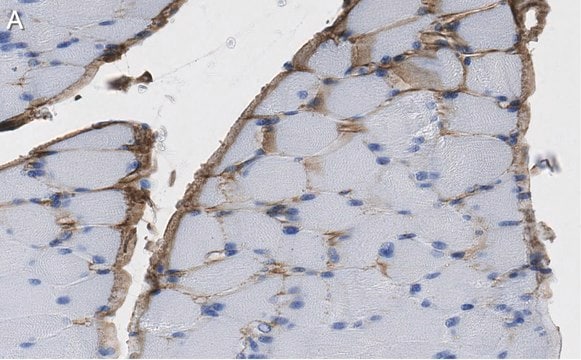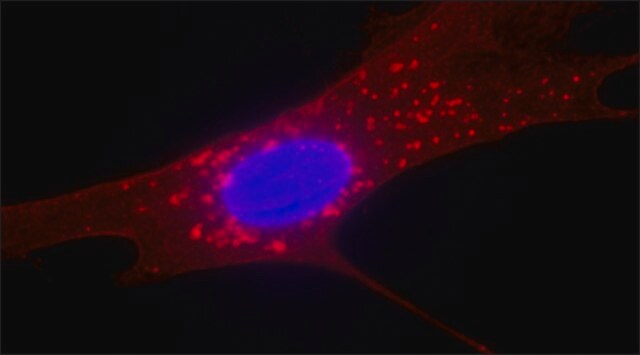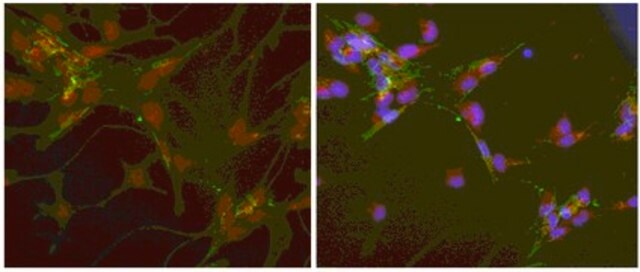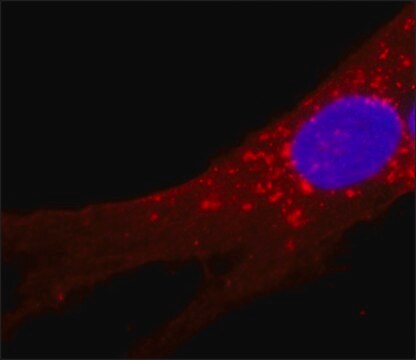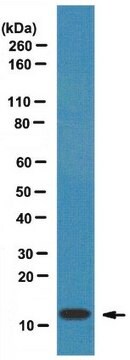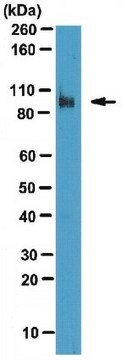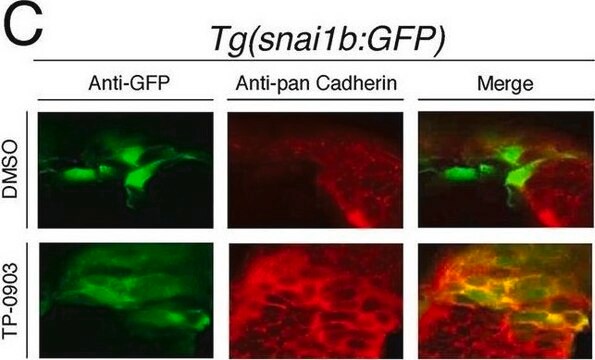CBL271
Anti-Fibroblasts Antibody, clone TE-7
clone TE-7, Chemicon®, from mouse
Synonym(s):
Fibroblast Marker
About This Item
Recommended Products
biological source
mouse
Quality Level
antibody form
purified antibody
antibody product type
primary antibodies
clone
TE-7, monoclonal
species reactivity
human
manufacturer/tradename
Chemicon®
technique(s)
flow cytometry: suitable
immunocytochemistry: suitable
immunofluorescence: suitable
immunohistochemistry: suitable
isotype
IgG1
shipped in
wet ice
target post-translational modification
unmodified
Gene Information
human ... FGF1(2246)
Related Categories
Specificity
Immunogen
Application
Immunocytochemistry Analysis: A representative lot immunostained human muscle fibroblasts by fluorescent immunocytochemistry (Agley, C.C., et al. (2015). J. Vis. Exp. (95):52049).
Immunocytochemistry Analysis: A representative lot immunostained MRC-5 fetal fibroblasts and normal human dermal fibroblasts (NHDF), but not fibrocytes or macrophages by immunocytochemistry (Bertolotto, C., et al. (2009). PLoS One. 4(10):e7475).
Flow Cytometry Analysis: A representative lot detected fibroblasts differentiated from human ESCs and iPSCs (Zhang, J., et al. (2012). Circ. Res. 111(9):1125-1136).
Immunofluorescence Analysis: A representative lot immunostained fibroblasts in human skeletal muscle cryosections by fluorescent immunohistochemistry (Agley, C.C., et al. (2013). J. Cell. Sci. 126(Pt 24):5610-5625).
Immunofluorescence Analysis: A representative lot immunostained the fibrous stroma and vessels in acetone-fixed, frozen human tissue sections by fluorescent immunohistochemistry (Haynes, B.F., et al. (1984). J. Exp. Med. 159(4):1149-1168).
Inflammation & Immunology
Immunoglobulins & Immunology
Physical form
Storage and Stability
Legal Information
Disclaimer
Not finding the right product?
Try our Product Selector Tool.
recommended
Storage Class Code
12 - Non Combustible Liquids
WGK
WGK 2
Flash Point(F)
Not applicable
Flash Point(C)
Not applicable
Regulatory Listings
Regulatory Listings are mainly provided for chemical products. Only limited information can be provided here for non-chemical products. No entry means none of the components are listed. It is the user’s obligation to ensure the safe and legal use of the product.
JAN Code
CBL271:
Certificates of Analysis (COA)
Search for Certificates of Analysis (COA) by entering the products Lot/Batch Number. Lot and Batch Numbers can be found on a product’s label following the words ‘Lot’ or ‘Batch’.
Already Own This Product?
Find documentation for the products that you have recently purchased in the Document Library.
Customers Also Viewed
Our team of scientists has experience in all areas of research including Life Science, Material Science, Chemical Synthesis, Chromatography, Analytical and many others.
Contact Technical Service